As Spain’s third-largest city, Valencia is one of my favorite places. It’s the birthplace of paella, the origin of flamenco dance, and home to Spain’s second-largest seaport. Known as the “City of Sunshine,” Valencia enjoys over 300 days of sunlight each year, offering a unique tropical vibe and some of the most beautiful coastlines.
Barcelona left me with the impression of a vibrant, lively city—a haven for wanderers and travelers, a port of freedom. Madrid, on the other hand, felt slower-paced, fashionable, and comfortable—a city well-suited for living. But Valencia always fills me with a longing to return. The entire city is orderly, warm, and beautiful, leaving me with unforgettable memories.
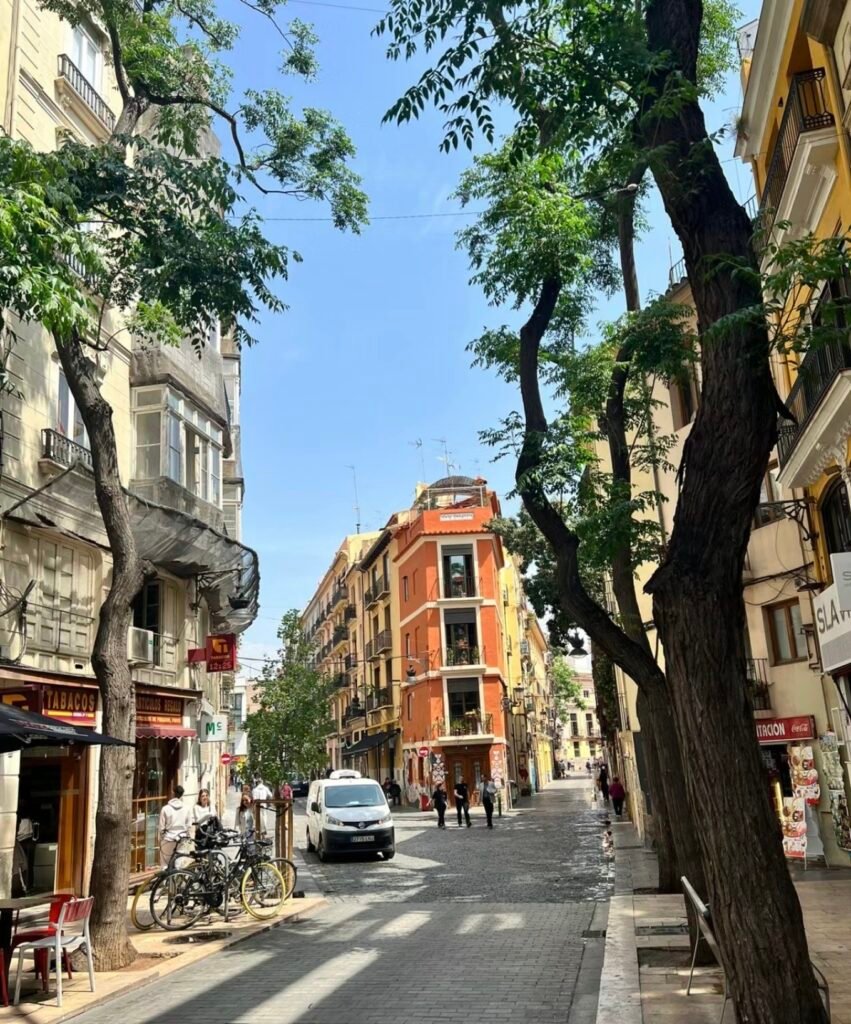
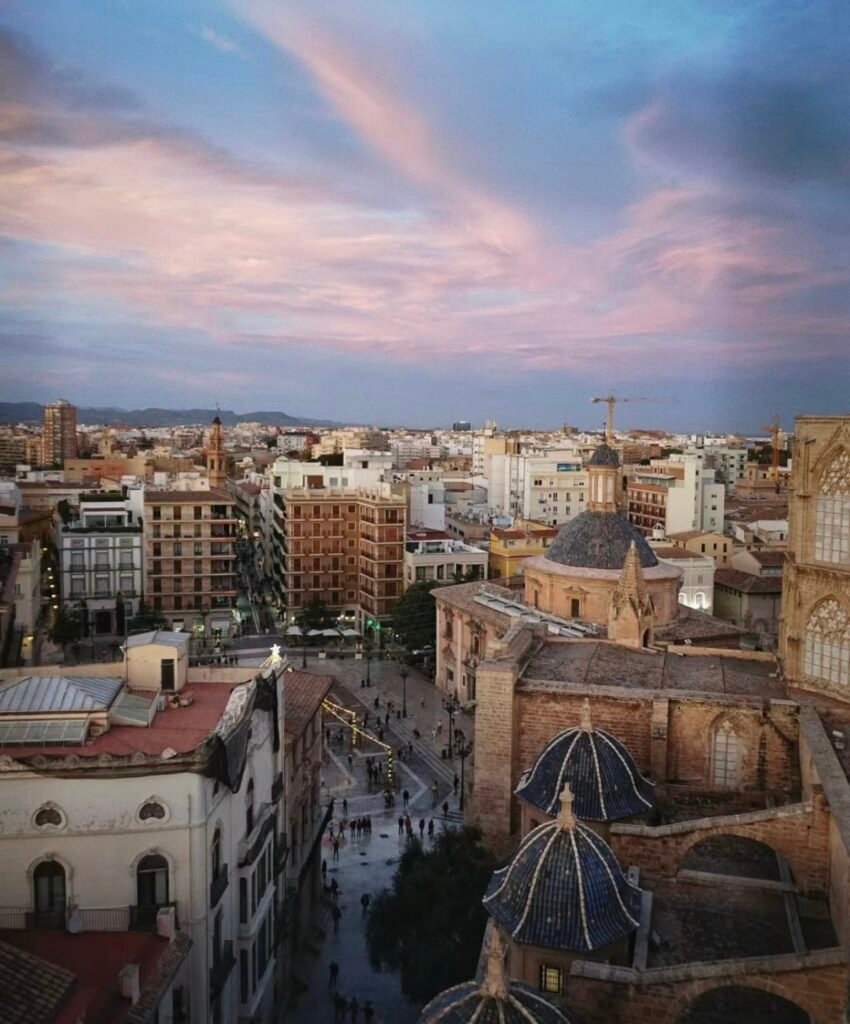
Every year in mid-March, Valencia hosts the grand Las Fallas Festival to welcome the arrival of spring. During the festival, elaborate and expensive figures, called ninots, are paraded through the streets before being set ablaze. The sight of dozens of these figures burning simultaneously is truly breathtaking. If you’re lucky enough to visit Valencia during this time, this festival is an experience you absolutely should not miss.
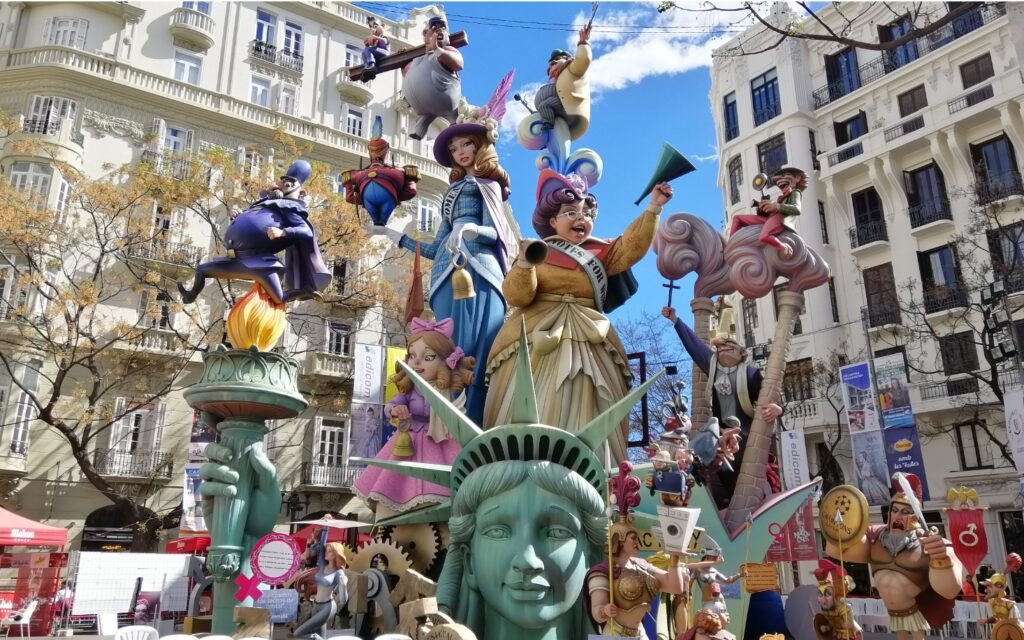
Valencia is home to a postmodern architectural complex designed by world-renowned architect Santiago Calatrava, a project that took 14 years to complete. Calatrava often draws inspiration from nature, such as animal skeletons, feathers, and seashells. The City of Arts and Sciences is a prime example of his visionary approach, with a sleek and modern design. Conveniently located just a short walk from our hotel, it takes only about 10 minutes to reach on foot. The complex was built alongside a park where locals enjoy strolling.
Fans of TV series may recognize this location—it served as one of the primary filming sites for Westworld. Now repurposed as an exhibition space, it opens to the public intermittently for various events. The architecture seamlessly merges modern design with Baroque elements, giving the space a multidimensional feel. Walking through it feels like engaging in a dialogue with the future.
It’s awe-inspiring to realize how many brilliant architects Spain has produced. Their ingenuity and creativity offer a true feast for the eyes.

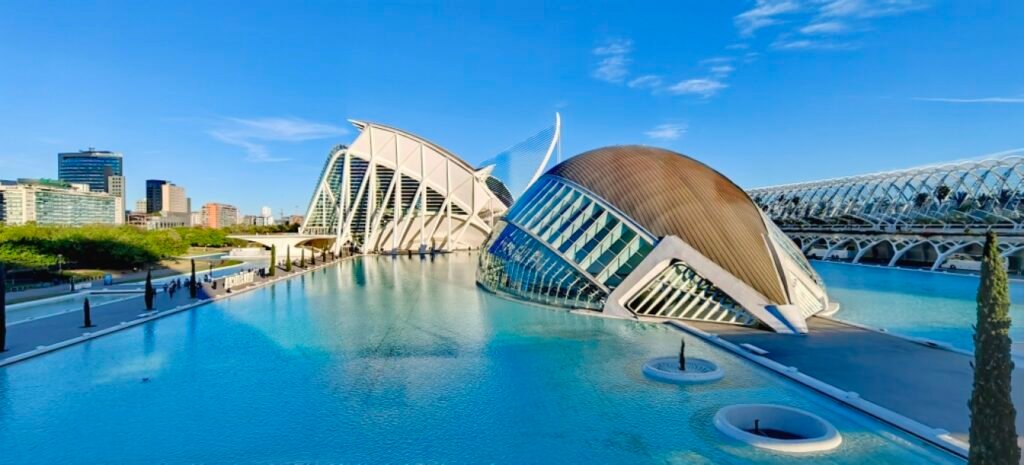
The City of Arts and Sciences in Valencia is made up of five main parts: the Palau de les Arts Reina Sofia (opera house), the Oceanographic, the Hemisférico (planetarium), the Science Museum, and the L’Oceanogràfic (botanical garden). Each part has a unique design, often inspired by animals. For example, the Hemisférico looks like an eye, especially when you see its reflection in the water, and it kinda resembles a cat too.
Oceanogràfic Aquarium
Behind the City of Arts and Sciences lies Europe’s largest aquarium, highly recommended by local friends in Spain. The design of the aquarium resembles a miniature version of the Sydney Opera House, with its reflection in the surrounding water creating an eye-catching sight.
The aquarium is divided into seven pavilions, each representing a different marine ecosystem, including the Mediterranean, Arctic, Tropical, and Red Sea. It is home to more than 45,000 species. The outdoor environment is beautifully designed, filled with flowers and lush greenery—currently in bloom—making the place feel like an artistic garden.
In addition to marine life, the aquarium also houses various seabirds that inhabit the land. One of the highlights is the Atlantic Pavilion, where the rare white beluga whale, the aquarium’s crown jewel, resides. Visitors can also enjoy meticulously arranged dolphin shows, making the experience even more m


Tasting Paella
After a long day of exploring, we sought out a great seafood restaurant to enjoy an authentic paella. Spain is one of the few countries in Europe that embraces rice dishes, and Valencia’s prime location along both the Atlantic and the Mediterranean provides abundant fresh seafood. This is the birthplace of the world-famous paella.
The preparation of paella is quite meticulous. It traditionally incorporates saffron, a valuable spice, along with salami and peppers, creating a dish packed with nutrients. Seafood like fish and shellfish, rich in protein and omega-3 fatty acids, offers great benefits for brain development—perhaps one reason why Spaniards are so clever?
Another distinctive version is squid ink paella. Though its dark, inky appearance might seem unusual, the taste is incredibly delicious, making it a must-try dish.


Valencia Beach
To catch the sunrise, we arrived at the beach before dawn. The beach was quiet, with only a few visitors. We sat on the soft sand, waiting for the sun to rise. As I reached for my camera to capture the glowing sky, I realized my backpack was missing. I scanned the surroundings and noticed a few figures rummaging through something about ten meters away. I rushed over to see what was going on, and to my relief, it was my lost backpack.
The three young men, likely in their twenties with dark skin, quickly dropped the bag and walked away as I demanded it back. I searched inside for my camera, only to find it missing. I ran after them and confronted them again. At first, they denied having the camera, but when I threatened to call the police, they reluctantly returned it. In hindsight, they must have taken the bag while hiding behind me, waiting for the perfect moment to steal it.
Though I was aware that theft is common, I hadn’t expected such boldness. Thankfully, I noticed it in time and avoided a bigger loss—losing something like a passport abroad would be a real headache. Unfortunately, the incident made us miss the best moment of the sunrise, which left us feeling frustrated.
As the sky brightened, we were met with the sight of crystal-clear, deep blue water. The shoreline stretched far, with gentle waves lapping against the beach. Coconut trees dotted the soft sand, and the shore was lined with beach chairs, perfect for sunbathing. Soon, more visitors began to arrive. Europeans love sunbathing, tanning their skin to shades of bronze, which they see as a sign of good health. However, the sun here is strong, so it’s essential to use high-SPF sunscreen to avoid sunburn.
I also noticed that there were no shark nets in the deeper waters, so caution is advised. With the sea breeze blowing, I let go of the earlier frustration and enjoyed the moment, allowing the wind to carry my worries away.

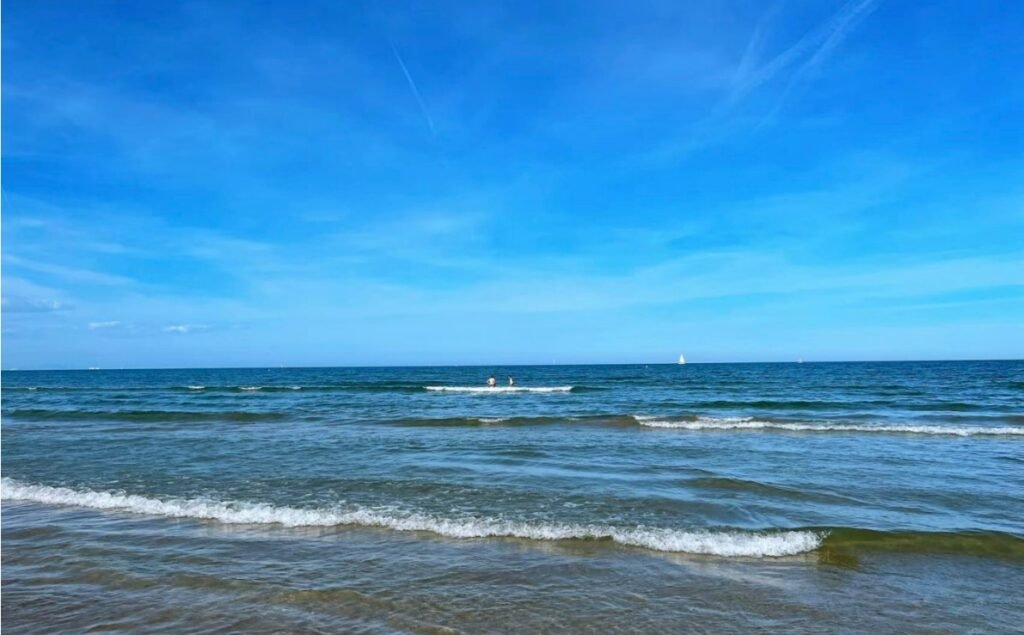
The City Center of the Old Town
The old town has preserved its charming, historic atmosphere. Many of the city’s main attractions are concentrated here, including the iconic cathedral, city hall, central market, Silk Exchange (highly recommended), and the Plaza de la Virgen. Numerous shops and unique boutiques are also tucked away in this area.
At the center of town, there’s a square with a strikingly crooked ancient tree, drawing attention for its unusual shape. We stepped into a nearby church and encountered an elderly lady performing her mass. Standing quietly behind her, we watched as she lit the candles and prayed with devotion. It was touching to witness such sincere faith.
In the square, a flock of white doves eagerly pecked at food thrown by passersby. We wandered through the streets, immersing ourselves in the rich cultural atmosphere and appreciating the spirit of the city.
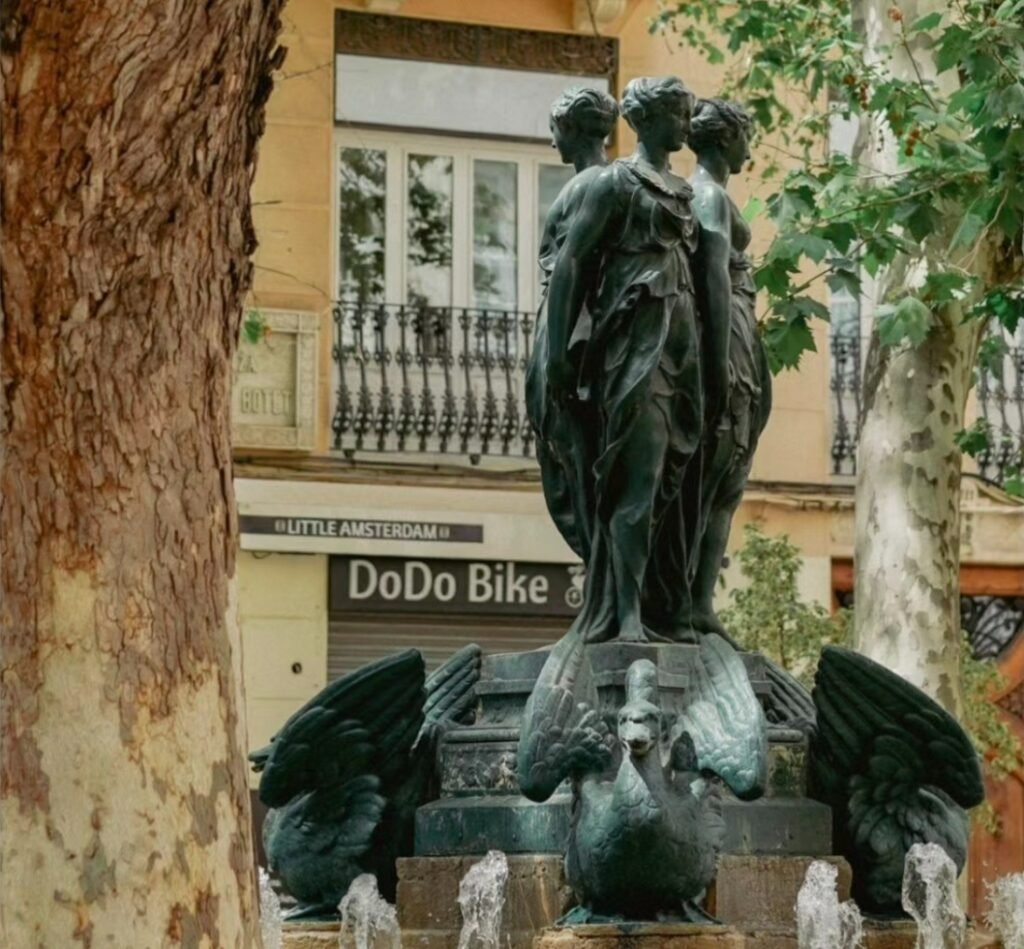

The Castle of Santa Bárbara is located in Alicante, Spain, in the Valencia region, perched on Monte Benacantil right by the Mediterranean Sea.
This is the Orange Blossom Coast in the province of Castellón, Valencia region. It’s made up of about 120 kilometers of beaches and bays. The name comes from the local abundance of citrus fruits, giving the coast a sweet, fragrant name.
The beautiful Mediterranean town of Peñíscola is known as the “ancient landmark of the Orange Blossom Coast” in Spain’s Passionate Towns. The town features old houses built from gray rock, palm trees, blue skies, and turquoise waters, all showcasing a typical Mediterranean charm.




